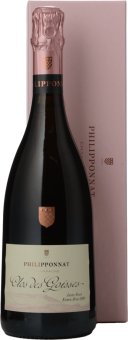Billecart-Salmon Cuvée Nicolas François Billecart Brut Champagne
Egly-Ouriet Grand Cru Blanc De Noirs
This cuvée was bottled in 2012, after the 2011 vintage had spent close to one year in cask, and was blended with 50% reserve wines from 2010. All of the vinification and ageing for both vintages was in barrique as always. Dosage was at 4g/L.
G H Mumm RSRV Cuvee Lalou
Henriot Cuvee Hemera
HENRIOT Cuvee Hemera, Champagne Produced from only Grand Cru vineyards with Pinot Noir from the Montagne de Reims and Chardonnay from the Côte des Blancs in equal parts, then aged for a minimum of 12 years on the lees, this empyreal wine is delightfully delectable. A medium golden straw in colour, the Henriot Cuvee Hemera is elegant, very dry, light and lively. Expressing white peach and green fruits accented by a citrus lift, the Champagne has an enchanting creamy texture with generous layers of biscuity notes throughout, with a sleek, well-knit acidity and a long-lengthy finish across the palate.
Philipponnat Champagne Clos des Goisses Extra-Brut Vintage
The Philipponnat family has owned and run its Champagne house in the heart of the wine-growing areas of Aÿ, Mareuil-sur-Aÿ and Averney for over 500 years. A family of vignerons, winemakers and merchants since the 16th century, they famously supplied their wines to Louis XIV, the Sun King. The houses 20 hectares of vines are Grand and Premier Cru, ensuring quality and intensity in the wines. Mont de Mareuil, where Clos des Goisses is located, has been planted with vines since the 16th century. The Domaine was acquired by Philipponnat in 1935, and immediately became its jewel. The vineyard is planted with Pinot Noir and Chardonnay grapes that make up this exquisite wine. Bright gold, fine effervescence forming a persistent bead. Elegant and fruity with notes of fresh raspberries and raspberry eau-de-vie. The finish is precise with notes of praline, frangipane, sponge cake and pastry cream. The attack is fresh and pur while on the palate, the wine is very elegant and expresses slightly mentholated notes. The finish is long and mineral. A wine suitable for the finest of occasions!
Georges Laval Les Hautes Chevres
Philipponnat Clos des Goisses Just Rose Extra-Brut
PHILIPPONNAT Clos des Goisses Just Rose Extra-Brut, Champagne
Chateau Vieux Certan
The Vieux Château Certan estate has existed since the mid-1700s, though the date of establishment is unknown. Like all of the wines in the Pomerol Appellation, Vieux Château Certan is not classified but is widely regarded as one of the great growths of the region and one of the worlds great wines.
Charles Heidsieck Champagne Charlie Brut
Chateau Valandraud St. Emilion Grand Cru
In 1989, Jean-Luc Thunevin and Murielle Andraud acquired a small plot of 0.6 hectares in the valley of Saint-Emilion between Pavie-Macquin and La Clotte. In 1991, they produced their first vintage bottled by themselves. Since then, they have acquired other plots and properties, in Saint-Christophe-Des-Bardes, Saint Sulpice de Faleyrens and Saint-Etienne de Lisse. While the first critics called it "garage wine", Château Valandraud, although still unclassified, is nevertheless considered by almost all wine professionals, including Robert Parker, as one of the very first wines of Bordeaux. Château Valandraud was promoted to 1er Grand Cru Classé de Saint Emilion in 2012. Member of the Union of Grands Crus of Bordeaux since 2017. The 2009 Valandraud is a blend of 85% Merlot and 15% Cabernet Franc matured in 100% new oak for 22 months.










